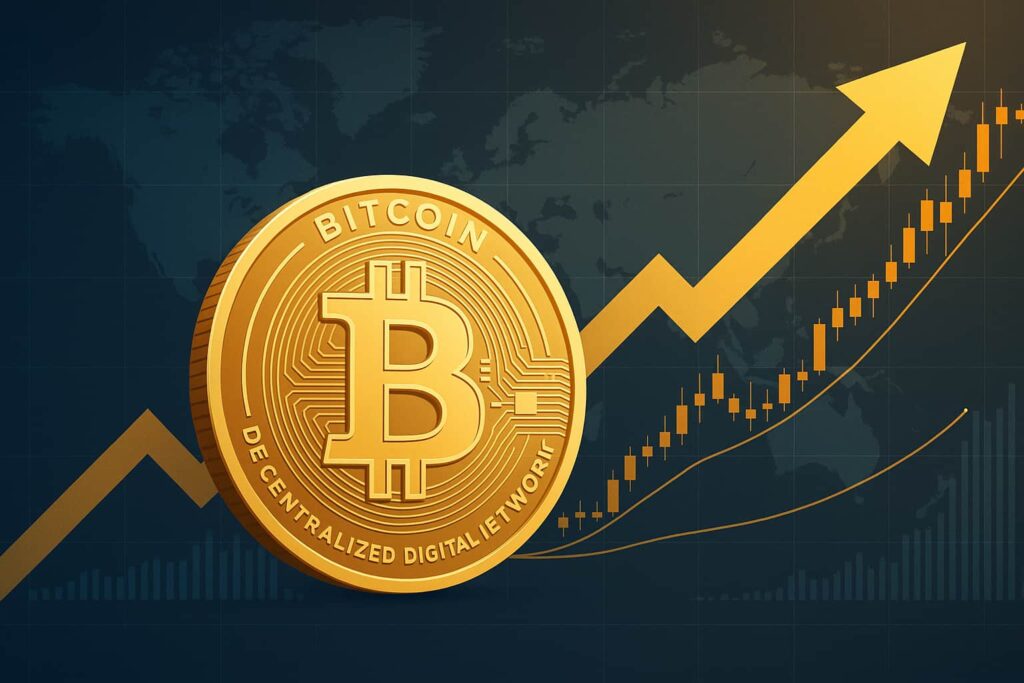The evolving financial landscape has witnessed the rise of Bitcoin as a revolutionary force, challenging traditional norms and presenting new possibilities for the global economy. Bitcoin’s decentralized nature and potential for substantial returns have piqued the interest of investors worldwide. In this context, understanding the potential future of Bitcoin, particularly in terms of long-term investment, becomes crucial. As forecasts and predictions abound, it is essential for investors to discern the viability of Bitcoin’s projected growth trajectories.
Bitcoin’s Journey to Becoming a Global Financial Asset
The Growing Acceptance of Bitcoin
Bitcoin’s journey is marked by its increasing recognition as a reliable store of value. Its decentralized framework, free from the grips of any centralized authority, coupled with a capped supply of 21 million coins, forms the bedrock of its intrinsic value. Proponents like Michael Saylor, co-founder of MicroStrategy, advocate for the larger adoption of Bitcoin, suggesting that tokenizing assets on a blockchain could streamline financial systems and enhance transparency.
Saylor envisions Bitcoin playing a pivotal role in the future financial ecosystem, positing that it may well become the standard currency for digital asset transactions. This shift, fueled by political willingness, particularly during administrations like that of Donald Trump, who displayed a crypto-supportive stance, could potentiate Bitcoin’s integration into mainstream finance.
Potential Future Valuation
The hypothetical scenario where Bitcoin’s value escalates to $13 million per BTC by 2045 places its market cap at an astronomical $273 trillion. Such a scenario envisions Bitcoin surpassing the combined value of major global financial entities. However, this prediction is met with skepticism due to the sheer scale of global economic restructuring required. Political and economic barriers remain formidable challenges in aligning global economies towards a Bitcoin-centric system.
Analyzing Bitcoin’s Investment Potential
Despite the grand vision of a $13 million valuation per Bitcoin, the present reality positions Bitcoin as a promising yet speculative investment. Its capped supply and growing acceptance liken it to digital gold. The current gold market’s valuation of $23.1 trillion sets a conceivable mid-term target for Bitcoin at approximately $1.1 million per coin, aligning with more moderate predictions of its growth potential.
Nevertheless, investors should be cautious, as Bitcoin remains highly speculative, its value largely influenced by market sentiment and buyer confidence. Furthermore, significant holdings by entities like MicroStrategy, which possesses 582,000 BTC valued at around $60 billion, underscore intrinsic biases driving bullish forecasts.
Exploring DeFi: The Case for Solaxy (SOLX)
While Bitcoin’s long-term prospects continue to intrigue, the DeFi sector presents immediate opportunities for higher returns. Emerging projects like Solaxy (SOLX) are garnering attention for their innovative solutions in decentralized finance. Solaxy’s Layer-2 infrastructure promises fast, cost-effective transactions while maintaining security, positioning it as a potential front-runner in tackling DeFi scalability issues.
Investors eyeing quick gains and strategic positioning in the DeFi landscape may find Solaxy’s developmental trajectory appealing. As it grows, Solaxy is poised to become a significant player in the next wave of DeFi innovations.
Conclusion
This comprehensive guide delves into Bitcoin’s transformative potential, examining both its theoretical high-value projections and its current investment allure. The emerging opportunities within the DeFi sector, exemplified by Solaxy, further underscore the evolving dynamics of the cryptocurrency market. As investors seek informed insights, the FAQs below provide further clarity on common concerns.
Frequently Asked Questions
Is Bitcoin a Reliable Long-Term Investment?
Bitcoin’s potential as a long-term investment is grounded in its limited supply and growing recognition as a digital asset akin to gold. While it offers significant appreciation potential, investors should consider market volatility and the speculative nature of its current valuation.
How Does Bitcoin Compare to Traditional Assets?
Bitcoin differs fundamentally from traditional assets due to its decentralized nature and reliance on blockchain technology. Unlike stocks or bonds, it does not generate revenue or interest, making its value contingent on market demand and perception.
What Role Does Regulation Play in Bitcoin’s Future?
Regulation is pivotal in shaping Bitcoin’s integration into the global financial system. Clear regulatory frameworks can enhance investor confidence and facilitate broader adoption, while inconsistent regulation could hinder its growth.
What Opportunities Exist in the DeFi Sector?
The DeFi sector offers groundbreaking opportunities for investors seeking high returns through innovative projects like Solaxy. By addressing scalability and efficiency, DeFi platforms can revolutionize financial transactions, attracting strategic investments.

